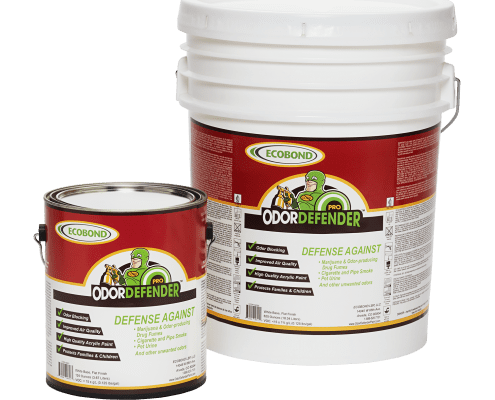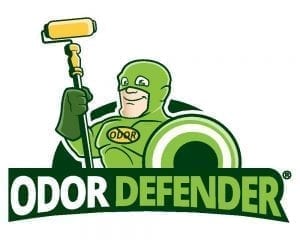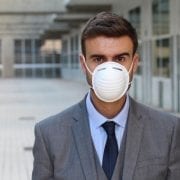The EPA reports that Americans spend an estimated 90% of their time indoors and as such, indoor air quality has huge effects on their well-being. There are many different indoor environmental pollutants, including smoke from cigarettes, marijuana, and smoking pipes. As of 2016, 15.5% of Americans smoke cigarettes; most smoke these cigarettes indoors and there is a massive need for minimizing indoor pollution.
When people smoke indoors, there is the production of third-hand smoke. This is smoke that is exhaled which afterward sticks to wall paint and surfaces. It is responsible for the yellow staining as well as the smell that remains thereafter. The latest reports show that toxins present in this smoke could still affect building occupants, especially babies, who sometimes touch and bite on surfaces. Lead, a toxin in nicotine, is also linked to diminished IAQ.
This could be a challenge to anyone out there looking to sell or rent out their property. The good news is the residue can be eliminated and the walls restored.
Eliminating Smoke Stain from Walls
One of the biggest nuisances would be wall stains since they are easily noticeable. To remove them, homeowners are advised to use warm vinegar for tough stains and a one-to-one dilution with water for mild stains. The warmth in vinegar will soften the stickiness of the layer. This treatment may remove smells.
Another option would be to use ammonia. A cup of ammonia is mixed with a quarter cup of baking soda, a half cup of vinegar and gallon of water and applied to the wall. The ammonia solution can then be rinsed off using warm water.
A more effective way to get rid of the toughest of stains would be to use Trisodium Phosphate (TSP). The chemical is very caustic; users are advised to wear gloves and handle with care. A tablespoon of TSP is mixed homogeneously with a gallon of water and the solution applied from the bottom of the wall upward (to avoid streaking) and left to sit for about five minutes. It can then be wiped off using clean water.
Eliminating the Smoky Smell
Even though the above solutions are effective in eliminating smell, residual smoke and smell in the air may contaminate the walls.
Homeowners are advised to ventilate the house thoroughly as they clean the walls and thereafter. This can be done by turning on any air-conditioning appliances such as fans, cleaning out the HVAC filters and opening all the windows. Carpets and drapes should also be cleaned and left out to air and dry. Tile surfaces can also be cleaned in the same manner. The problem with these methods is that they tend to be very labor-intensive and you may even worry if you are performing the task correctly to safely handle the problem. You should consider the only all-in-one solution to this problem: The Revolutionary Breakthrough & Innovative New Technology: The Best Smoke Odor Eliminator Product in the Market Today! ECOBOND® OdorDefender™ is a professional-grade Eco-friendly, odor-blocking paint designed for sealing & blocking dangerous odors and fumes from the effects of cigarette smoke, pot smoke, fire, meth as well as pet odors and substantially improves indoor air quality. Because odors are sealed and blocked, it gives the very best protection for your children & family!
Why You Need to Get Rid of Third-Hand Smoke
We all know that second-hand smoke can be damaging to your lungs. However, third-hand smoke is dangerous as well. Unfortunately, not many people are aware of this.
Third-hand smoke is smoke that lingers long after the smoker is gone. It can stay for months or years and cause health problems for the people occupying the building. It can get stuck in the furniture, in carpets, and on the walls. Getting rid of third-hand smoke starts with getting new paint for your walls. A lot of the particles from third-hand smoke are stuck in the walls, and even if you replace the couches and carpets, the only way to get rid of all the particles is to paint over your walls. You need an Odor Management Plan.
But should you use just any old paint? No.
Whether you own an apartment building, or you sell houses, it’s crucial that you protect the health of your tenants by painting over your walls and getting rid of third-hand smoke. According to new studies, third-hand smoke may be causing more cancer cases than previously thought. According to pulmonologist Humberto Choi, MD, studies are looking into cancer cases that were not caused by first-hand or second-hand smoke and whether they might have been caused by third-hand smoke. Third-hand smoke leaves chemicals that mix with particles in the air to form carcinogens, which can cause cancer.
Third-hand smoke is especially harmful to children. Children tend to touch the floor and walls a lot, which means they have more contact with the smoke particles that are left over. Repainting your walls will not just get reduce the potential risk of cancer. The smoke particles may also lead to other health problems, such as asthma or allergies.
When thinking about improving the air quality in an apartment, third-hand smoke is something you must pay attention to.
Why the Air Quality in the Home Might be Toxic
Renting or leasing a home has its handful of problems. Sometimes homeowners can get lucky and have fantastic tenants who care as much about their property as they do, but that’s not always the case. Many renters are looking for a temporary living arrangement, many times not even fulfilling the lease they had initially signed.
One of the most significant issues when changing out tenants is deciding what needs to be fixed, cleaned, or exchanged. Air quality is such an important consideration when evaluating the apartment or house for future occupants. Potential issues will pop up with renters if they feel they are living in an environment that is toxic to them. So how can a homeowner tell that the air might be less than optimal?
Start with evaluating the previous tenants.
How did they treat the property? What were the conditions of the unit like when they moved out? If the answer is horrible, then it might be time to start looking into other factors that play into the air quality of the home. These habits will seep into the walls that will need some thorough cleaning and repainting by a professional and use ECOBOND® OdorDefender™, the proprietary patent-pending specialty formulation for successful smoke odor elimination. This formulation includes resins, food-grade mineral additives, and alginate from seaweed; nature’s most effective absorber of toxic pollutants.
Are there signs of smoking?
Whether the smoking taking place was pot, tobacco, or cigarettes, each type has a smell that lingers in the rooms, hurting the air quality of the home. If you can tell, the new tenants will be able to as well. The damage will be apparent on the carpet and will cling to floors, walls, and ceilings. Sometimes stains will occur as well, giving the homeowner no other choice but to redo the walls in the home.
Why are taking these steps so important?
According to livestrong.com, the air quality in the home from smoking cigarettes may cause a variety of health issues caused by not correctly restoring a home after previous renters or owners have continuously smoked indoors. When bringing in new renters, please take steps to ensure your home has the best air quality you can offer. These steps can save a life and possibly some money for the homeowner in the long run.
Solution:
The best solution to the problem is ECOBOND® OdorDefender™, a revolutionary odor-blocking paint featuring breakthrough technology. This innovative, eco-friendly product is designed to block odors stemming from cigarettes, marijuana, fire, meth, and much more. Give your family the protection they deserve with ECOBOND® OdorDefender™.
ORDER TODAY!
www.OdorDefenderPaint.com
1-888-520-7131






Leave a Reply
Want to join the discussion?Feel free to contribute!